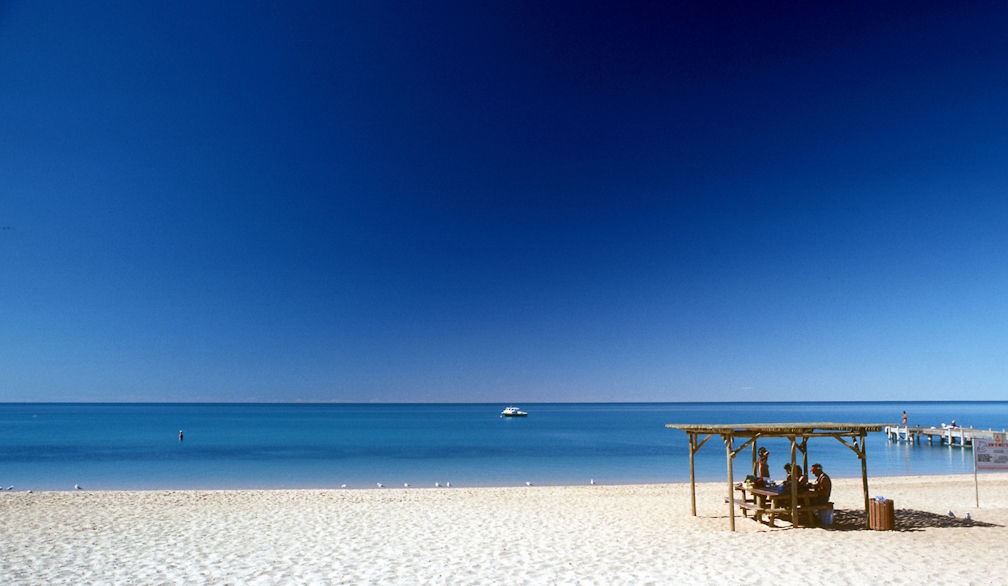The WA government spent $8 million on Coldplay – but this tourism sugar hit comes at the expense of local music
- Written by Sam Whiting, Lecturer - Creative Industries, University of South Australia

The Western Australian government subsidised two exclusive 2023 concerts by Coldplay to the tune of A$8 million, Guardian Australia reported last week[1].
The November performances at Perth’s Optus Stadium were described by the government as a “major tourism coup[2]” for WA.
The state’s “return on investment[3]” will no doubt be reported by one of the big four accountancy firms, inevitably citing ticket purchases, overnight stays and hospitality spend.
Whether one believes these reports or not[4], these metrics do not measure the true cost-benefits of large scale cultural initiatives.
The return on government investments in arts and events should be measured over a decade, not a month, and include a range of non-quantifiable social and cultural benefits that require time and understanding to emerge.
Picking winners
The subsidy of concerts hosted by United States-based multinational promoter Live Nation Entertainment reflects a broader trend led by state governments of handing large sums of public money to very successful commercial firms[5].
South Australia has pursued a similar strategy[6], with the state tourism commission investing in Harvest Rock festival, which has been criticised[7] for its lack of local artists in the lineup.
With Live Nation being pursued by the US Department of Justice for anti-competitive behaviour[8], questions regarding the propriety and value of rewarding such entities with considerable public funding are being raised.
Governments argue such events inject “visitor spend” into the local economy, and justify subsidies by way of increased tourism.
It is a quick win. But there is a strong argument[9] this use of cultural events for short-term “sugar hit” economic stimulus erodes capacity in the local arts community.
Instead of audience revenue going towards local artists, venues and producers that nurture and develop grassroots talent, spending goes towards hospitality and accommodation.
Headline talent is almost always imported. While such events offer temporary employment to local industry workers, such as crew and events staff, the lack of longer term investment in the sector further contributes to the precarity of these workers.
Meanwhile, many small live music venues are shuttering[10] and grassroots festivals and events are in crisis[11].
When funding for music is directed through tourism budgets rather than arts budgets there may be an increased spend on hospitality in the short-term – but this is often at the expense of the long-term health of the local sector. Such events are often funded as one-offs featuring largely imported talent produced by overseas firms, undermining the capacity of the local sector.
Bread and circuses
Festivals have long been a means to encourage cultural tourism[12], but they require investment in institutional capacity and the availability of local talent, creatives and support workers.
Arts and culture spending is often subject to considerable scrutiny[13]. But tourism spending is relatively unrestricted[14] and justified via opaque cost-benefit analyses[15].
While there is a compelling argument that strong public support for the events sector was necessary immediately post-pandemic[16] to kick-start a sector on its knees, it is becoming increasingly difficult to justify when international music tourism is now back with a vengeance – as Taylor Swift’s recent tour illustrates.
While the live music market trends towards more consolidation and monopolistic behaviour[17], there should be even greater scrutiny of the shape of government spending on major music events.
Public funding for cultural events needs to aim beyond generating money for hospitality and look to invest in the long-term capacity of the local sector.
Who misses out?
The rising trend of the “visitor economy[18]” raises serious concerns about the purpose of arts and cultural policy.
Live music becomes about generating money, not for any expected return to a local industry, but from consumer spending on imported cultural goods[19].
Chief economist at The Australia Institute, Greg Jericho, estimated a $55 million spend[20] on Swift’s recent Australian tour. However, he writes:
not much of this will remain in Australia. There’s a reason this world tour will possibly make Swift a billionaire.
While Swift’s tour was an entirely commercial affair, state governments seeking to replicate this effect by handing millions to multinational conglomerates is another matter.
Subsidy of international artists and festivals may generate short term relief for the tourism, hospitality and accommodation sector, producing increased “visitor spend”.
But it is not very public spirited, and not in the long-term interests of the Australian music sector.
Local music used to be the heart-blood of Australian popular culture, inseparable from the country’s sense of self-confidence and identity. It is now in dire straits[21].
The Australian music sector requires investment in small and medium venues, a completely new approach to regulating global tech platforms[22] such as Spotify, and rethinking the role of public radio[23] for a new era.
Importing mainstream British acts at the cost of millions while Australian music is atrophying is ultimately counterproductive.
References
- ^ reported last week (www.theguardian.com)
- ^ major tourism coup (www.dlgsc.wa.gov.au)
- ^ return on investment (tourismcouncilwa.com.au)
- ^ believes these reports or not (www.indaily.com.au)
- ^ very successful commercial firms (www.livenationentertainment.com)
- ^ similar strategy (www.theguardian.com)
- ^ criticised (citymag.indaily.com.au)
- ^ anti-competitive behaviour (www.justice.gov)
- ^ strong argument (www.uwestminsterpress.co.uk)
- ^ are shuttering (www.indaily.com.au)
- ^ are in crisis (theconversation.com)
- ^ encourage cultural tourism (www.taylorfrancis.com)
- ^ considerable scrutiny (jinghuaqian.com)
- ^ relatively unrestricted (www.tra.gov.au)
- ^ opaque cost-benefit analyses (www.premier.sa.gov.au)
- ^ immediately post-pandemic (www.theguardian.com)
- ^ more consolidation and monopolistic behaviour (theconversation.com)
- ^ visitor economy (www.austrade.gov.au)
- ^ imported cultural goods (researchportal.murdoch.edu.au)
- ^ a $55 million spend (www.theguardian.com)
- ^ dire straits (www.theguardian.com)
- ^ global tech platforms (www.theguardian.com)
- ^ rethinking the role of public radio (theconversation.com)

















